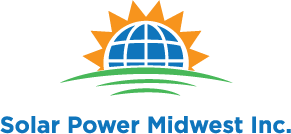Are you planning to go solar? Well, this is by far one of the best decisions you can make.
As solar-powered technology has taken the world by storm, more people are opting for solar energy to power their home. And why not? You save energy, money, increase house value, decrease carbon footprint, and a lot more!
So, if you’re thinking of ‘going green’ and saving energy, installing rooftop solar panels is the best way to do this. Before you switch to harnessing the Sun’s power, here are a few things that you need to consider. Ready to discover? Let’s dive in.
Roof’s condition
Adding solar panels to your roof can help you save big. However, before moving onto this step, you need to check the roof’s condition. Does it need renovation? Do you want to add tiles or shingles? Does it have enough space to install the solar panels?
If your roof isn’t in good condition, make sure to hire contractors to get the renovations completely done before appointing the installers. Moreover, if you’re living in a multi-unit complex, it will be beneficial if you share solar, which together you go eco-friendly and reduce electricity bills.
Use of energy
Measuring energy becomes easy when you install solar panels. For example, you can check electricity bills and determine what your energy consumption is every month, and in the same manner, you can evaluate how much energy you generate using the panels.
When you calculate the average amount of energy, it becomes easy for you to understand the number of panels you need for your rooftop. Most importantly, determine when you use maximum energy? Is it during the day or in the afternoon? For most families it’s actually in the evening when everyone is home from school and work.
Inverters
Solar power systems do not only come with panels but also an inverter. If you’re unaware of this device, let me explain. An inverter is a device that helps convert direct current (DC) to alternating current (AC).
Generally, there are two types:
Centralized inverter – The most common one used all over the globe. What does it do? It converts DC power collected from the system into AC power for the grid. But, it comes with one disadvantage. It can affect the entire system if one panel underperforms. For instance, if one panel is installed under a shade, the whole system will produce limited electricity.
Micro-inverter – Micro-inverters are a bit costlier than the former but come with some merits, as well. Unlike the centralized inverter, a micro-inverter is positioned on each panel, which means there’s no problem if one panel is under some shade. The microinverter allows for optimum power transmission from the solar system.
In short, to set up a solar power system, you need an inverter. It can last more than a decade, while the panels can go for three or four decades. Remember to select the premium inverters if you want to increase the panels’ shelf life.
Solar panels’ positioning
While installing solar panels, you can’t just place them anywhere on the rooftop. The position has a significant impact on the amount of electricity produced. But, how do you decide on the positioning? If you live in the northern hemisphere, you will find the Sun in the southern sky. Hence, place the panels facing south direction to enjoy maximum exposure. The opposite is true for people living in the southern hemisphere.
Suppose you don’t use energy during the afternoon and use it in the evening. For such cases, opt for a west-facing installation. It’s best to position the panels for optimum sun exposure as this will ensure you receive the desired power.
Solar panels’ angle
Your job is not done after you have decided on the position. The solar panel’s angles also matter! These can be tilted towards the Sun to enjoy the maximum benefit. The best you can do is put it at such an angle where it receives direct rays.
Moreover, you can optimize the tilt angle to increase the system’s efficiency. There’s nothing to worry about for tilted rooftops, but for the flat ones, you need to purchase tilt frames.
The flow of the water
What happens when it rains? Where does the water go? Does it run down the roof into the gutters?
This is something that you shouldn’t miss as embedding panels. Sometimes, some equipment can hinder water flow and drainage, leading to leaks and water accumulation. When these issues pop out of the blue, the entire system needs to be removed for repair.
There are some cases where solar installations have forced water to flow in other directions. To keep these situations at bay, hire contractors who can give you a well thought-out plan that does not obstruct water from flowing.
Warranties
Generally, there are three kinds of warranties:
Solar panel warranty – It covers your solar panels for almost three decades and offers 80% energy output. Don’t accept anything less than 25 years because that is considered lower than the industry standard.
Installation warranty – It covers panels and related parts, labor, shipping, roof penetrations, and more that are involved during installations. It lasts anywhere between 2-10 years.
Inverter warranty – This varies from among each company and generally covers manufacturing defects or materials. String inverters can go for a decade, while micro-inverters can last more than two decades.
Now that you’ve done some research, what other questions do you have. Reach out to us here at Solar Power Midwest for all of your solar needs! We’ll happily answer your questions and help design and install your new rooftop or ground mount system to help promote a greener environment.
